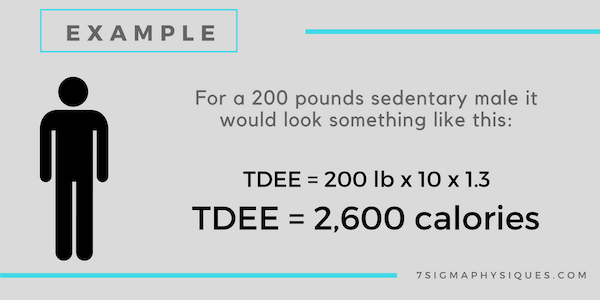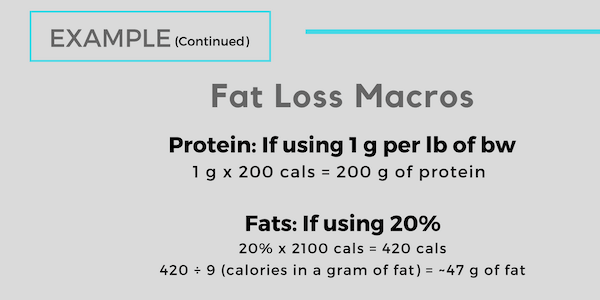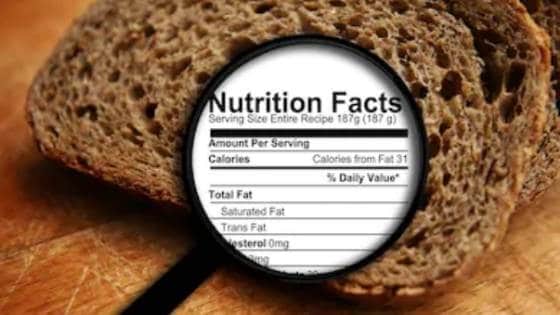Macros can be calculated in different ways, from percentages of calories to grams per pound of bodyweight.
In this article, we’ll be using a mix of the two; our protein intake will be based on grams per pound of bodyweight, while fats and carbs on percentages of calories.
Before you can begin to calculate your macros, you’ll first need to calculate your Maintenance Calories or Total Energy Expenditure (TDEE), then decide whether your goal is to lose or gain weight and lastly, calculate your macros.
Table of Contents
STEP 1: Find Your Maintenance Calories or TDEE
Since maintenance calories are the number of calories your body needs to maintain its current weight and TDEE is the number of calories you burn during a day, including your activity, these two numbers will be the same.
We’ll use the following formula to calculate your TDEE:
TDEE = (Bodyweight in pounds) x 10 x “Activity Multiplier”
The Activity Multiplier is the number used to estimate your daily activity level. The values used for the Activity Multiplier typically range from 1.2 to 2.4. (1)
| Activity Multiplier | Lifestyle | |
| Sedentary | 1.2 – 1.3 | Desk Job + No Exercise |
| Lightly Active | 1.4 – 1.5 | Desk Job + Light Exercise or Moderately Physical Work + No Exercise |
| Moderately Active | 1.6 | Moderately Physical Work + Light Exercise |
| Active | 1.7 | Moderately Physical Work + Heavy Exercise |
| Very Active | 1.8 – 1.9 | Heavy Physical Work + Heavy Exercise |
| Extremely Active | 2.0 – 2.4 | Extremely Heavy Work + Heavy Exercise, Elite Athletes |
There’s a lot of ambiguity in what’s considered “light, moderate or heavy” physical work between individuals; therefore, slight adjustments in calories might need to be made after the calculation.
Note: There are many other formulas that can be used to calculate TDEE; however, it’s unlikely that they will give you your exact TDEE as there can be a lot of individual variation. Nonetheless, they’re still a good way to get a close estimate.

STEP 2: Calculate Calories Based on Your Goals
Now that you’ve found your maintenance calories, you must adjust them based on your goal.
Fat Loss
- Subtract 300 to 1000 cals from your maintenance calories.
Research has shown that a deficit of 300 to 1000 cals is considered safe and should amount to a loss of ~0.5 to ~2 lb per week. (2)
However, as you start losing weight your TDEE will start decreasing as well; you’ll eventually reach a point where you won’t be losing weight at the same rate (or not losing at all) and will then have to create a new deficit.
This reduction in energy expenditure is one of the many metabolic adaptations that come during a fat loss phase.
The rate of weight loss should be kept between 0.5 to 1% of your bodyweight per week in order to maximize muscle retention. (3)
Keep in mind that eating too little calories can also cause negative health effects.
That’s why it’s recommended to complement your diet with some form of cardiovascular activity or exercise to help you reach your desired deficit.
I’ve also written an article on whether you should lower calories or increase cardio to keep losing weight.
Start your journey to losing 24-60 pounds in just 12 weeks.
Get the free 12-Week Fat Loss Challenge Training Guide!

Lean Mass Gain for Males
- Beginners: Add between 200 to 300 cals to your maintenance.
- Intermediates: Add 100 to 200 cals to your maintenance.
- Advanced: minimal surplus over maintenance up to 100 cals.
Lean Mass Gain for Females
- Beginners: Add between 150 to 225 cals to your maintenance.
- Intermediates: Add 75 to 150 cals to your maintenance.
- Advanced: Minimal surplus over maintenance up to 75 cals.
Rate of Weight Gain for both Men and Women
- Beginners: 1 to 1.5% of bodyweight per month.
- Intermediates: 0.5 to 1% of bodyweight per month.
- Advanced: Minimal weight gain up to 0.5% of bodyweight per month.
This conservative increment over maintenance calories will minimize the amount of body fat stored during a gaining phase. A larger increase in calories could lead to mostly fat being gained. (3)

STEP 3: Calculate Your Macros
We will start by calculating our protein intake based on pounds of bodyweight, then calculate fats based on percentage and fill the remaining calories with carbohydrates.
Macros For Fat Loss
- Protein: 1 – 1.4 g per pound of bodyweight.
- Fats: 15 – 25% of your total calories should come from fats.
- Carbs: Remaining calories will come from carbs.
Note: Fats and carbs are the body’s preferred sources of energy. Therefore, it is important to make sure to never go too low on these nutrients. The minimum daily fat intake should be 0.25 g/lb of bodyweight and 0.5 g/lb of bodyweight for carbs. (3)
Macros For Lean Mass Gain
- Protein: 0.8 – 1.2 g per pound of bodyweight.
- Fats: 20 – 30%
- Carbs: Remaining calories will come from carbs. (4)


These guidelines will work for the majority of the population; however, as I mentioned before, there will always be outliers regardless of which scientific approach you use.
Have more questions about how to calculate your macros and TDEE? Let me know in the comments section below!
If you’re ready to start your weight loss journey, the 12-Week Fat Loss Challenge is the place to start!

This plan helps men and women lose fat without starving themselves or giving up their favorite foods.
References
- Hills, A. P., Mokhtar, N., & Byrne, N. M. (2014). Assessment of Physical Activity and Energy Expenditure: An Overview of Objective Measures. Frontiers in Nutrition, 1. https://doi.org/10.3389/fnut.2014.00005
- Finkler, E., Heymsfield, S. B., & St-Onge, M.-P. (2012). Rate of weight loss can be predicted by patient characteristics and intervention strategies. Journal of the Academy of Nutrition and Dietetics, 112(1), 75–80. https://doi.org/10.1016/j.jada.2011.08.034
- Helms, E., Valdez, A., Morgan, A. (2015). The Muscle and Strength Pyramid Nutrition. Retrieved from https://muscleandstrengthpyramids.com/
- Helms, E. R., Aragon, A. A., & Fitschen, P. J. (2014). Evidence-based recommendations for natural bodybuilding contest preparation: nutrition and supplementation. Journal of the International Society of Sports Nutrition, 11, 20. https://doi.org/10.1186/1550-2783-11-20





